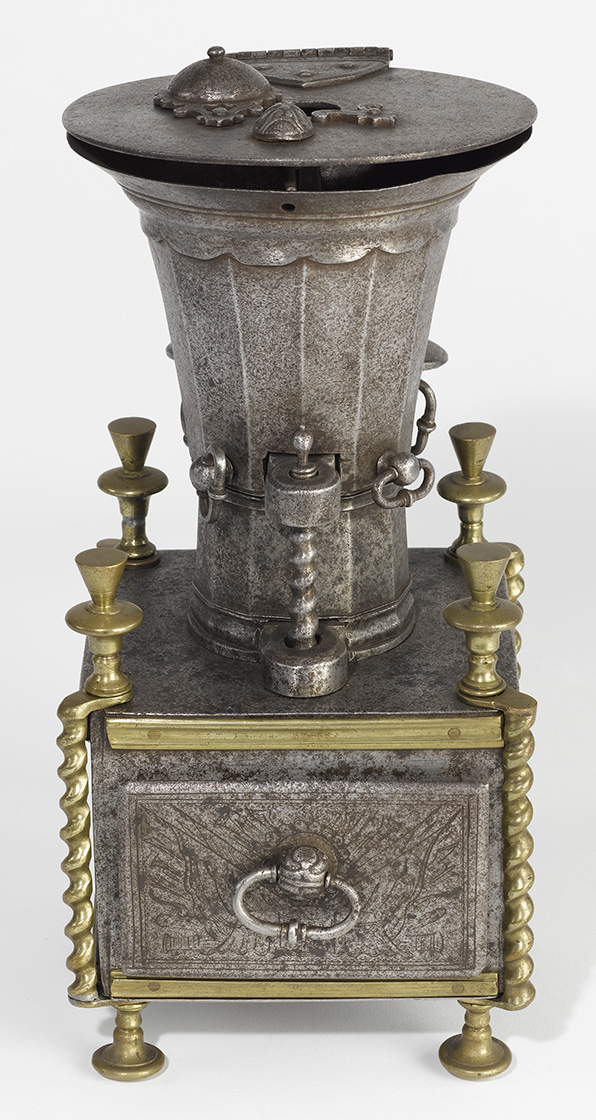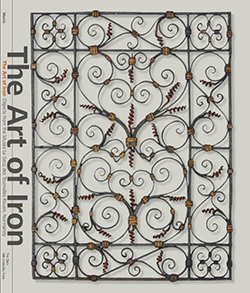
June 9–September 16, 2018
household and husbandry
Benoit Tivelier the Elder (French, active in Saint-Étienne, 18th century)
Coffee and Spice Mill
1749
Wrought steel and rolled steel, finished with file and chisel, with turned brass
Réunion des Musées Métropolitains, Rouen, Normandy, LS.1930
© Agence La Belle Vie – Nathalie Landry
Wrought iron was utilized for many objects within the household, a category represented in great depth at the Musée Le Secq des Tournelles. Wrought-iron implements were essential to the home kitchen and hearth in premodern times. Fireplace implements including andirons, shovels, and tongs were often made of wrought iron, as were cooking utensils standard to every home prior to the introduction of the enclosed cooking range in the nineteenth century. Cooking pots, along with pothooks from which they could be suspended at the desired distance above a fire, were essential household items, as were gridirons that could hold foods horizontally over or near the heat. Although lighting devices such as candlesticks could be fashioned from more luxurious metals like bronze and silver, less expensive examples made with wrought iron still abound with decorative detail and sometimes with ingenious mechanisms.
Many other household instruments were made of iron, among them clothes irons and sewing equipment (such as scissors and needle cases), kitchen and pantry utensils (such as corkscrews, meat-smoking racks, and sugar nippers), gardening tools, door knockers, hinges, hooks, and bolts. The Musée Le Secq has extensive holdings of early spice and coffee grinders, such as the one featured in this exhibition made in the city of Saint-Étienne, a center of production of this type of specialty device.
Ironwork could be found in the yard and garden as well, sometimes as part of fountains or yard ornaments or for use in animal husbandry. The exhibition includes a snake that was once part of a garden decoration, two spiked dog collars, and a bear muzzle.
The catalogue for The Art of Iron includes essays by Kathleen M. Morris, the Clark Art Institute curator of decorative arts, and by the Musée Le Secq’s former and current curators, Anne-Charlotte Cathelineau and Alexandra Bosc. Softcover, 112 pages. Distributed by Yale University Press. Call the Museum Store at 413 458 0520 to order.


